#ancient hiatory
Text
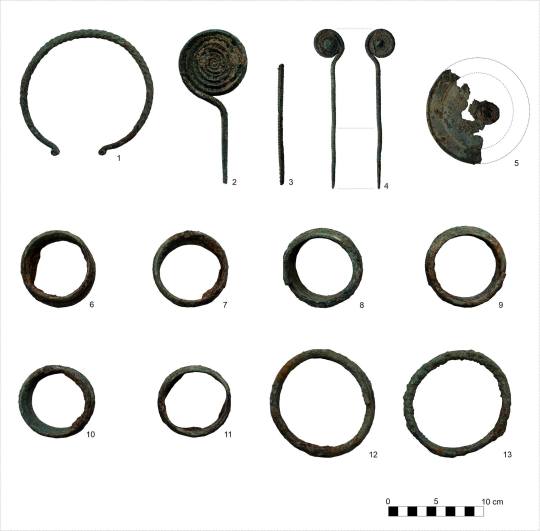
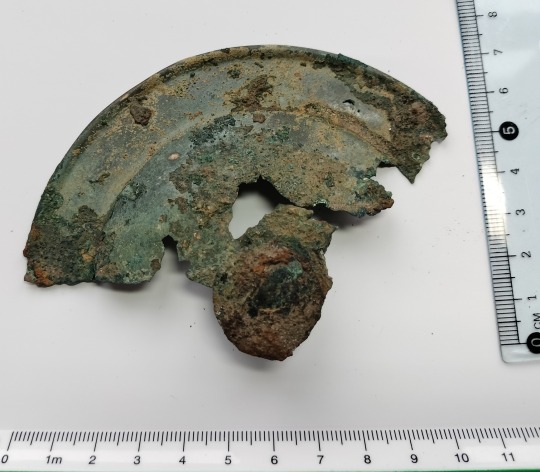

2500-Year-Old Bronze Age Artifacts Found in Poland
A metal detectorist looking for a World War I artifacts near Turobin, eastern Poland, found a hoard of Bronze Age jewelry instead. They were produced by the Lusatian culture in the waning era of their dominance in the region, ca. 550-400 B.C. Lusatian artifacts are extremely rare finds in this part of Poland, and the ones that have been discovered are usually individual pieces or fragments.
Łukasz Jabłoński, armed with a permit from the Provincial Office for the Protection of Monuments in Lublin, scanned the field on January 21, 2023. Digging under the snow, he found 13 bronze artifacts 8-10 inches under the surface of the soil. He immediately reported his discovery to the conservation office in Zamość and turned in the objects.
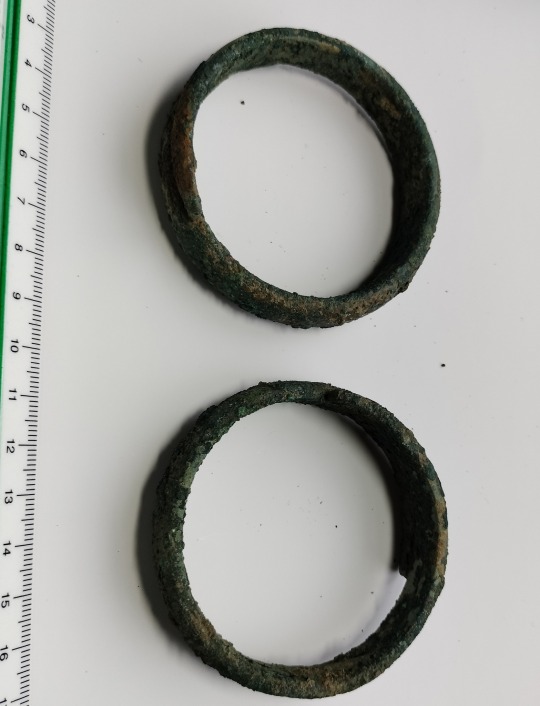
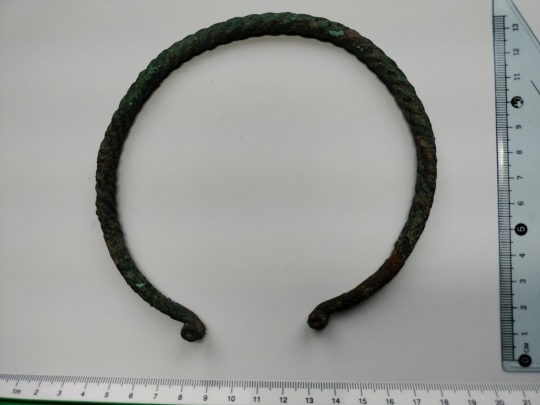
The 13 pieces include a cloak pin 6 inches long with a large spiral twisted wire terminal 2.8 inches in diameter. The pointed tip of the pin is missing. A second pin is even longer — 6.5 inches — and is intact with its pointed end. The head is a smaller spiral 1.2 inches in diameter with a decorative knob in the center.
Another stand-out piece is a twisted neck torc in penannular shape made from a single piece of bronze wire with tapered ends. The twisting technique was an advanced metalworking skill, especially using bronze because it hardens quickly and must be annealed repeatedly during the twisting process to prevent it from breaking.

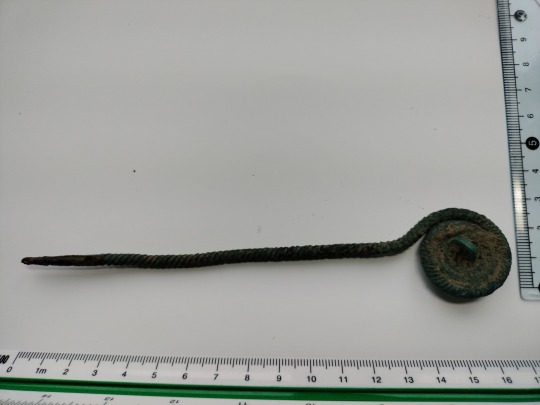
There are also eight bracelets in the group: two 4.7 inches in diameter made of thick bronze wire with blunt overlapping ends, two made of single-stranded flat wire (one undecorated, the other incised with herringbone lines), and four massive ones three inches in diameter with overlapping ends.
The hoard is now being conserved and studied at the Museum of the Biłgoraj Land in Biłgoraj. The location of the find site has been kept secret to deter looters while archaeologists excavate it to find out more about the deposit and to look for any additional artifacts that might be in the area.
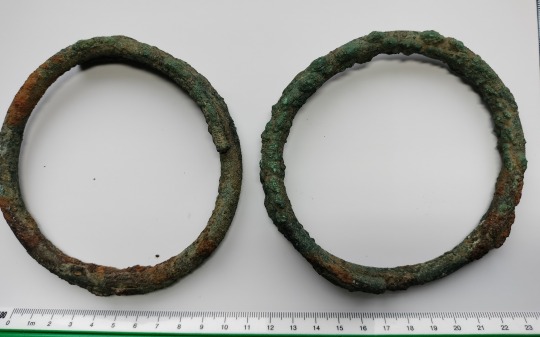

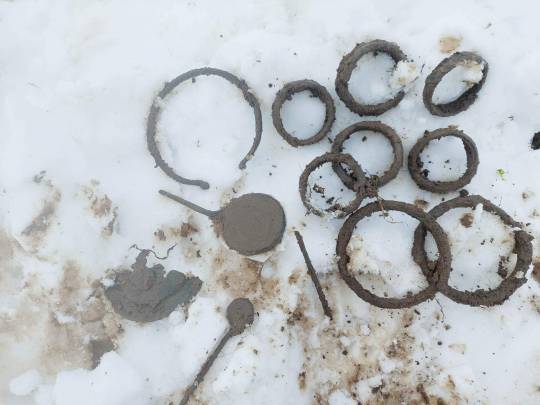

#A 2500-Year-Old Bronze Artifacts Found in Poland#Turobin Poland#metal detector#metal detecting#metal detecting finds#bronze#bronze artifacts#ancient artifacts#archeology#archeolgst#history#history news#ancient hiatory#ancient culture#ancient civilizations
25 notes
·
View notes
Video
youtube
NT Wright | The New Testament in Its World: How History Can Revitalize F...
God’s promises. Looking for redemption. To transform people for world. not about being saved to go to heaven. Kingdom of heaven is on earth. “Heaven is important but it’s not the end of the world!”
0 notes
Photo

Things I found in Agra: I would like to call this as "The Dead and the Sleeping" Location: Chishti ki Dargah, Fatehpursikri #india #incredible #photography #dargah #fatehpur #mughals #heritage #hiatory #historicsite #graves #resting #ancient #archeology #traveller #travelling #experiences #thanksforlikes (at Buland Darwaza)
#graves#resting#heritage#hiatory#ancient#fatehpur#photography#traveller#archeology#experiences#dargah#india#historicsite#mughals#travelling#incredible#thanksforlikes
0 notes
Photo
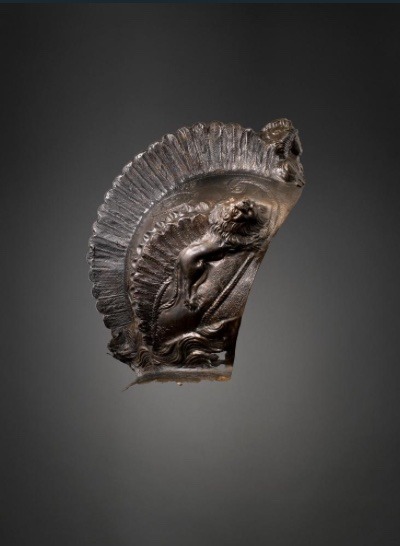
Roman Bronze Helmet
AD 175-225.
H. 28 x w. 21.5 x ø 23 cm.
Bronze skull section of a cavalry helmet of the Pfonhofen type configured for the inclusion of a face mask, decorated with feather ornaments, the central crest terminates in a female protome – perhaps the goddess Minerva – flanked by rearing lions in splendid relief.
#Roman Bronze Helmet#bronze#ancient artifacts#archeology#archeolgst#history#hiatory news#ancient history#ancient culture#ancient civilizations#ancient rome#roman history#roman empire#roman legion
48 notes
·
View notes
Photo

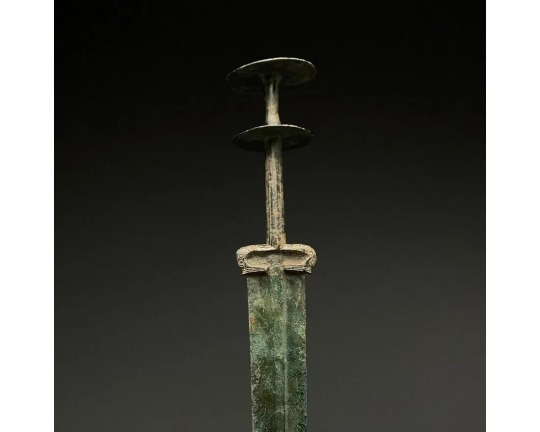

Greek Bronze Sword
1200-700 BC
This beautiful cast bronze sword has a tapering, bevelled blade with a raised midrib and beautiful integral handle comprised of long cylindrical grip, with two flat disks, separated by a short section of cylindrical grip. Bronze weaponry production flourished in western Asia, the Aegean, and Mainland Greece from the 2nd millennium BC to about 700 BC, when it was gradually replaced by iron. Swords, spears, and arrows were important symbols of war in Greek Bronze Age societies and served as powerful reminders that authority rested in the hands of those who could earn it.
Size: L:538mm / W:78mm ; 600g;
#Greek Bronze Sword 1200-700 BC#bronze#ancient sword#ancient weapon#ancient artifact#hiatory#history news#ancient history#ancient culture#ancient civilizations#ancient greece#greek history
18 notes
·
View notes
Photo
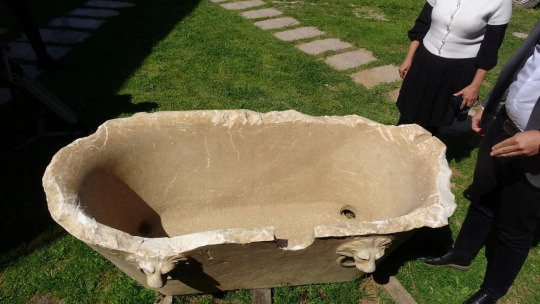
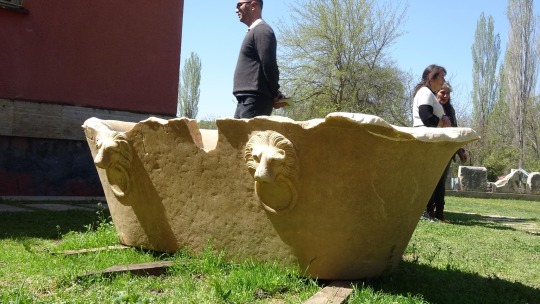
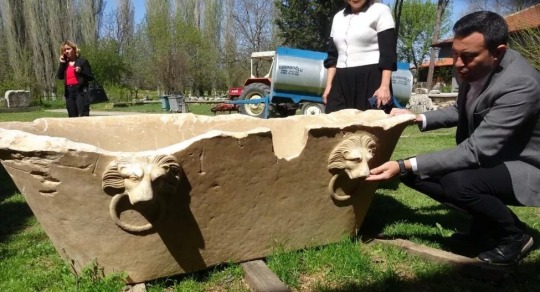

A Very Rare 3rd-Century Roman Marble Bathtub Discovered in Turkey
Made entirely from marble, the tub is the only one of its kind found in Turkey
Weighing in at one ton and measuring 1.80 meters in length (almost six feet), one can’t help but wonder how antiquities thieves managed the enormous feat of stealing a 1,800-year-old-marble bathtub, but in any event, the smuggler’s luck ran out when they were caught by Turkish law enforcement agents trying to sell the piece in Turkey’s western province of Aydin.
As reported in Hurriyet Daily News, the tub is unique in that it is entirely made from marble and with lion’s head reliefs on two sides. It is believed that the tub had been manufactured in the ancient Hellenistic city of Aphrodisias, which was dedicated and named after the Greek goddess of love, Aphrodite.
According to the newspaper Provincial Culture and Tourism Director Umut Tuncer examined the bathtub and emphasized that the ancient city of Aphrodisias, which is on the UNESCO World Heritage List, was unique and well known for its sculpting school.
“People of Aphrodisias were wealthy. We think that the marble bathtub is a special piece found in this city, which dates back to 1st BC. This bathtub, which is about 1,800 years old, is one of the rare examples in the world because it is completely marble. As far as we know, it is the only example in Turkey,” Tuncer said. “There are bathtubs created with various mud layers that have been found in Turkey before, but this completely marble structure actually expresses the wealth of this region and the welfare of the society.”
He said the lion head reliefs on the right and left sides of the tub to represent power and authority, and believes the tub had been used in the house of a state administrator or a wealthy businessperson who ruled the region at that time.
Noting that the culture of bathing, hot water and cleaning was an important part of the culture during that period, Tuncer told the paper the tub would be restored and exhibited at the Aphrodisias Museum.
“There is a bath structure in all of our ancient cities. These places were actually used as public and social spaces,” he said.
According to UNESCO, the city’s wealth came from the marble quarries which surround it and the art produced by its sculptors.
Located in western Anatolia near the modern-day village of Geyre, the ruins though lesser-known have been well preserved and restored, including temples, a theater, agora and two traditional-style bath complexes which had a prominent place in the city’s layout.
By Judith Sudilovsky.
#A Very Rare 3rd-Century Roman Marble Bathtub Discovered in Turkey#archeology#archeolgst#looted#stolen#ancient artifacts#history#history news#ancient hiatory#ancient culture#ancient civilizations#roman era#roman history#roman empire
37 notes
·
View notes